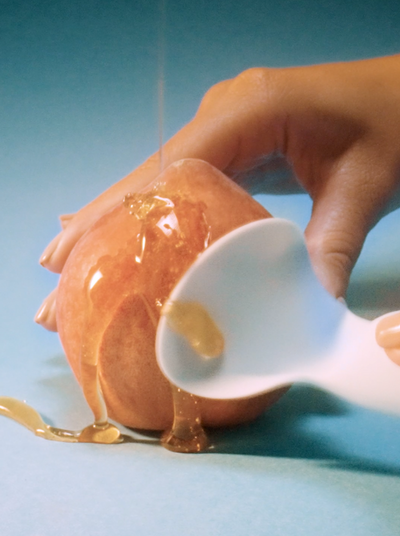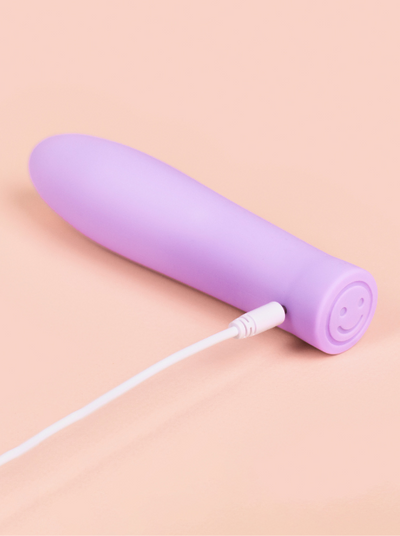Squirting, female ejaculation & other fluids explained.
When developing intimate lubricants for people with vulvas, we researched the physiological mechanisms at play in lubrication during sex. We found the learnings very interesting, and as some of you also asked us to clarify what was the difference between wetness and female ejaculation, we invited a sexologist to walk us through the different intimate fluids the female body produces.
Wetness, mucus, cyprine, lubrication, female ejaculation: the fluids produced by female genitalia have been labelled many things, and they are rarely self-explanatory. Here is a comprehensive overview of a vulva owner’s vaginal secretions and their purpose.
"When people with vulvas (vulvae) get sexually aroused, there’s extra blood flow to the tissue of the vagina, which creates a pressure that allows for filtered blood plasma (that’s the liquid part of your blood—yes, you read that correctly) to seep through the vaginal walls. That’s vaginal lubrication. But during sex, it’s possible to experience other kinds of involuntary fluid emissions" (Clue).
1. Cervical mucus.
Cervical mucus refers to the fluid produced by the endocervical glands found in the cervix, which connects the uterus to the vagina. These glands continuously produce a small amount of a liquid-like substance that flows down the vaginal wall. Slightly viscous, the cervical mucus stretches between the fingers and resembles raw egg whites. Its role is twofold, and depends on the phases of the ovulatory cycle for menstruators:
- As part of the vagina’s self-cleaning process, the cervical mucus helps flush out any bacteria, germs, and dead cells that arise from the shedding of the vagina’s inner lining. This vaginal discharge, or leukorrhea, is normal and will often take on a thin, milky white appearance. But if the discharge’s quantity, color or smell differs from what you usually experience, it is advisable to consult a gynecologist. The cervical mucus also helps menstrual blood flow more easily out of the body. The fluid’s tight, mesh-like molecular structure gives it a thick consistency, which helps prevent sperm from passing through the cervix outside of the ovulation phase.
- For those that menstruate, during ovulation, when estrogen levels increase, the composition of the cervical mucus changes, becoming runnier and more abundant. Its pH levels also become more alkaline, thus neutralizing the vagina’s acidity, which is inhospitable to sperm. All these changes help facilitate the sperm’s passage to the egg. The fluid’s structure will also stretch to clear the way for select sperm, but those with significant abnormalities will be caught in its web.
2. Lubrication.
When sexually aroused, the Bartholin’s glands, which are located near the vaginal opening near the vaginal lips, will produce fluids to lubricate the vagina. This lubrication is meant to facilitate penetration and thrusting during intercourse. Hormonal changes, such as a decline in estrogen after childbirth or increase in prolactin levels when breastfeeding, can lead to less vaginal lubrication. To alleviate any pain or dryness following such changes, it is advisable to use a lubricant during penetrative stimulation.
3. Transudate.
Although the vagina’s mucus membrane does not contain any secretory glands, it still reacts to sexual arousal. Upon arousal, the blood vessels swell, kicking off a process called vaginal transudation. In this process, fluids called the transudate are released through the membrane’s walls and combine with other vaginal secretions.
This mixture of fluids also serves as a lubricant for vaginal penetration. This liquid has also been referred to as “cyprine”, but scientists aren’t in agreement on what is classified as cyprine: it is either the secretions of Bartholin’s glands or vaginal transudate, or a mixture of both. In any case, the term cyprine is almost always associated with female excitement and lubrication.
4. Female ejaculation.
Last but not least, female ejaculation yields fascination for many, and its mysteries are only now beginning to unfold. Researchers have discovered that, upon orgasm, some women emit a fluid composed of vaginal secretions and urine, plus one other substance in some cases. This substance is a fluid produced by the paraurethral glands. For most women, these glands – also known as the “female prostate” or “Skene’s glands” – will release a discharge during climax, though it often goes unnoticed. In rare, yet normal, instances, this fluid will be expelled with urine in the form of abrupt and uncontrollable jets. To date, no direct correlation has been established between female ejaculation and the intensity of pleasure experienced.
So, what is squirting?
It is a bodily reaction. The bladder fills up under the effect of sexual stimulation. The current scientific understanding is quite limited, hypothesis being that increased cardiac rhythm leads to faster blood circulation that leads to the bladder filling up. Squirting helps relieve the bladder tension that cannot be ejected through normal urination. This liquid has not had time to stay too long in the bladder before being ejected. So, unless the bladder was partially full before having sex, the liquid that gets ejected will have no smell or color.
An experiment was done by a French team of researchers with individuals to whom they asked to pee before sexual stimulation. Once participants felt they were about to squirt, a bladder ultrasound was taken and the researchers observed that their bladders were full again. Then, participants resumed sexual activity until squirting. The aqueous liquid had no color, no smell, was slightly salty and was ejected with or without participants reaching orgasm! After another ultrasound, participants’ bladders were empty. That, alongside the chemical composition of the liquid, showed the squirting liquid to be very diluted urine!
Two things to know about squirting.
Is squirting the same as female ejaculation? No. Female ejaculation results from a small amount of 5-10 ml of a white gooey liquid that gets ejected by the Skene’s glands that surround the urethra on the vulva. It contains proteins similar to some found in the ejaculate from the male prostate like precum and semen. It happens upon orgasm.
Does squirting equal orgasm? No. Squirting is a bodily reaction that happens independently of orgasm and may not feel pleasant to all squirting people. Likewise, you can have an orgasm and not squirt.
Want to learn more about our sexual anatomy? Check out Vulva Talks, Smile Makers free pleasure-positive sex education course!











